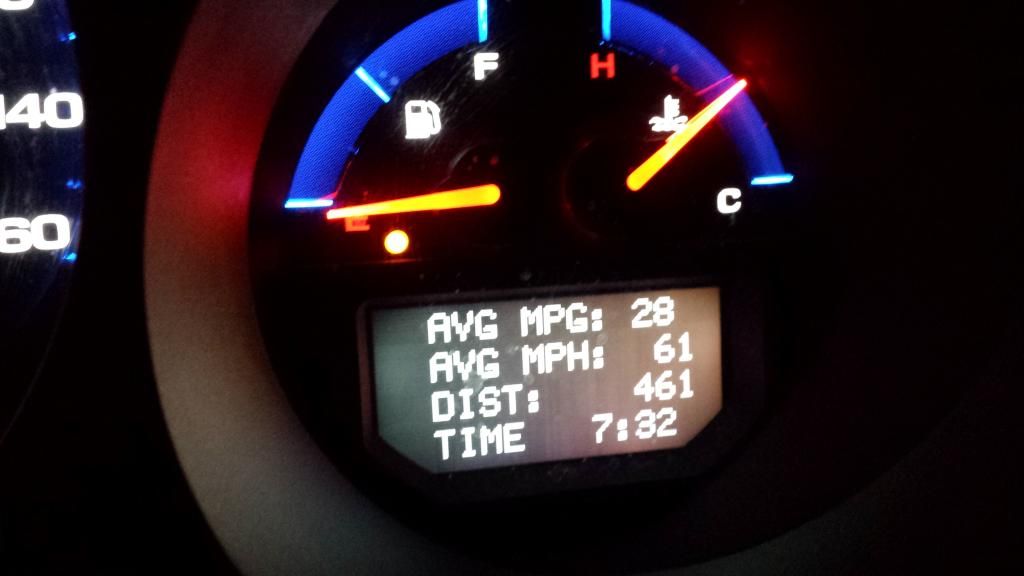A new analysis of Premium vs. Regular
#121
Technical reasons aside, a lot of the basis being used to discredit the manufacturer recommendations about octane seems to be what amounts to a conspiracy theory. It really just brings up the whole question as to why higher octanes of gasoline exist, as if it's all some kind of backroom deals by oil companies and car manufacturers, instead of being based on how these engines are actually engineered and designed to operate as efficiently as possible.
This reminds me OH SO MUCH of the threads where people claimed that filling their TLs with a lot of dead weight in the car somehow improved handling. It simply had no scientific basis, and these arguments against using the recommended octane often boil down to statements like "well, MY car bucks the trend/performs differently than anyone else's."
That said...let this discussion continue. I'll just be hanging out over here, doing my thang.

This reminds me OH SO MUCH of the threads where people claimed that filling their TLs with a lot of dead weight in the car somehow improved handling. It simply had no scientific basis, and these arguments against using the recommended octane often boil down to statements like "well, MY car bucks the trend/performs differently than anyone else's."
That said...let this discussion continue. I'll just be hanging out over here, doing my thang.

#122
I do not think it is an attempt to discredit manufacturer. Manufacturer providing a recommendation that should fit multiple driving styles and environmental conditions. Otherwise there would be another "fuel manual".
For example here are some factors effecting octane requirements:
Compression ratio (consistent)
Atmospheric pressure (variable)
Humidity (variable)
Air temperature (variable)
Air/fuel ratio (controllable by ECU)
Spark timing (controllable by ECU)
Basically under same load there are different octane requirements due to multiple variables and 91 should fit most of the conditions but there are circumstances when even 91 is not enough. But that is the fun of experimenting.
For example here are some factors effecting octane requirements:
Compression ratio (consistent)
Atmospheric pressure (variable)
Humidity (variable)
Air temperature (variable)
Air/fuel ratio (controllable by ECU)
Spark timing (controllable by ECU)
Basically under same load there are different octane requirements due to multiple variables and 91 should fit most of the conditions but there are circumstances when even 91 is not enough. But that is the fun of experimenting.
#124
This is a false assumption. Throttle and vacuum go together.. WOT is because at high RPM, vacuum drops as the scavenging process becomes almost laminar. Unless the head design is shit, valves don't seat right, blown rings, bent rods / bearings or there is an issue with the scavenging process, the CR doesn't change and is fairly uniform during the combustion cycle. Think about it, AF mix is drawn in under vacuum during the induction cycle, valves seal, AF mix is pressurized, then spark / combustion.
The volume change is uniform during this (from full volume to /11) so as long as the AF mix is uniform, which it should be unless there is an issue in the scavenging process, the pressurization of the AF mix remains the same. At very high RPM some roll-off might occur on some vehicles as the max efficiency has been reached. Anything more and your beyond spec, you lose power..
The volume change is uniform during this (from full volume to /11) so as long as the AF mix is uniform, which it should be unless there is an issue in the scavenging process, the pressurization of the AF mix remains the same. At very high RPM some roll-off might occur on some vehicles as the max efficiency has been reached. Anything more and your beyond spec, you lose power..
#125
Owners will hardly look in the mirror and say it is due to the 87 gas I put
#126
I run 91 non-ethanol cut gas and that's what the car has been tuned for. The TL's J-series is prone to knock even in stock form with 91 on hot days. To the OP's point if you live in a cold or high altitude area I don't see any reason why you couldn't switch to lower octane if no knock is detected since your IAT is so much lower than a warm summer day. The stock tune is good for 80% of the way people drive out there in terms of drivability. However for us performance enthusiasts and the way we drive it's not ideal.
My first car was an 87 Acura Integra, I didn't know better but the car was meant for "premium" I always put "regular" in it and didn't notice much until just before I sold it I put some "premium" in and then it seemed to run better. It made sense after I flipped through the owners manual as to why
My first car was an 87 Acura Integra, I didn't know better but the car was meant for "premium" I always put "regular" in it and didn't notice much until just before I sold it I put some "premium" in and then it seemed to run better. It made sense after I flipped through the owners manual as to why

#127
I run 91 non-ethanol cut gas and that's what the car has been tuned for. The TL's J-series is prone to knock even in stock form with 91 on hot days. To the OP's point if you live in a cold or high altitude area I don't see any reason why you couldn't switch to lower octane if no knock is detected since your IAT is so much lower than a warm summer day. The stock tune is good for 80% of the way people drive out there in terms of drivability. However for us performance enthusiasts and the way we drive it's not ideal.
My first car was an 87 Acura Integra, I didn't know better but the car was meant for "premium" I always put "regular" in it and didn't notice much until just before I sold it I put some "premium" in and then it seemed to run better. It made sense after I flipped through the owners manual as to why
My first car was an 87 Acura Integra, I didn't know better but the car was meant for "premium" I always put "regular" in it and didn't notice much until just before I sold it I put some "premium" in and then it seemed to run better. It made sense after I flipped through the owners manual as to why

#128
If you can avoid high loads, I feel 87 would be fine, but I run 91.
#129
Hi everyone,
I decided to dive even deeper. I went to Amazon to purchase this:
 Amazon.com: ScanTool 427201 OBDLink LX Bluetooth: OBD Adapter/Diagnostic Scanner for Android & Windows: Automotive
Amazon.com: ScanTool 427201 OBDLink LX Bluetooth: OBD Adapter/Diagnostic Scanner for Android & Windows: Automotive
And I downloaded these Android apps:
https://play.google.com/store/apps/d...l.torque&hl=en
https://play.google.com/store/apps/d...cnF1ZXNjYW4iXQ
which should, hopefully, allow me to directly measure ignition timing retard due to knock. Once they come, I will take screenshots and report my findings running 87 under various conditions in winter. I will try to answer the following questions, if I can:
1) My initial guess was that in cold weather conditions, the lower octane fuel would not necessarily lead to ignition retarding. I should hopefully confirm or refute this.
2) If ignition retarding is occurring, I should hopefully determine if it is able to control the levels of knocking down to "acceptable" levels.
If anyone else has already gathered this data, please post a link to it. I'd be very interested to see.
Also, I found another website that better explains the knock control mechanisms:
http://www.hondata.com/help/flashpro...rol_tables.htm
As well as the textbook I pointed to earlier, in which chapter 4.2 covers knock control:
http://www.powerstyle.ru/docs/ebook.pdf
I decided to dive even deeper. I went to Amazon to purchase this:
And I downloaded these Android apps:
https://play.google.com/store/apps/d...l.torque&hl=en
https://play.google.com/store/apps/d...cnF1ZXNjYW4iXQ
which should, hopefully, allow me to directly measure ignition timing retard due to knock. Once they come, I will take screenshots and report my findings running 87 under various conditions in winter. I will try to answer the following questions, if I can:
1) My initial guess was that in cold weather conditions, the lower octane fuel would not necessarily lead to ignition retarding. I should hopefully confirm or refute this.
2) If ignition retarding is occurring, I should hopefully determine if it is able to control the levels of knocking down to "acceptable" levels.
If anyone else has already gathered this data, please post a link to it. I'd be very interested to see.
Also, I found another website that better explains the knock control mechanisms:
http://www.hondata.com/help/flashpro...rol_tables.htm
As well as the textbook I pointed to earlier, in which chapter 4.2 covers knock control:
http://www.powerstyle.ru/docs/ebook.pdf
Last edited by RustyLogic; 01-28-2015 at 09:54 PM.
#130
Hi everyone,
I decided to dive even deeper. I went to Amazon to purchase this:
Amazon.com: ScanTool 427201 OBDLink LX Bluetooth: OBD Adapter/Diagnostic Scanner for Android & Windows: Automotive
And I downloaded these Android apps:
https://play.google.com/store/apps/d...l.torque&hl=en
https://play.google.com/store/apps/d...cnF1ZXNjYW4iXQ
which should, hopefully, allow me to directly measure ignition timing retard due to knock. Once they come, I will take screenshots and report my findings running 87 under various conditions in winter. I will try to answer the following questions, if I can:
1) My initial guess was that in cold weather conditions, the lower octane fuel would not necessarily lead to ignition retarding. I should hopefully confirm or refute this.
2) If ignition retarding is occurring, I should hopefully determine if it is able to control the levels of knocking down to "acceptable" levels.
If anyone else has already gathered this data, please post a link to it. I'd be very interested to see.
Also, I found another website that better explains the knock control mechanisms:
FlashPro Help
As well as the textbook I pointed to earlier, in which chapter 4.2 covers knock control:
http://www.powerstyle.ru/docs/ebook.pdf
I decided to dive even deeper. I went to Amazon to purchase this:
Amazon.com: ScanTool 427201 OBDLink LX Bluetooth: OBD Adapter/Diagnostic Scanner for Android & Windows: Automotive
And I downloaded these Android apps:
https://play.google.com/store/apps/d...l.torque&hl=en
https://play.google.com/store/apps/d...cnF1ZXNjYW4iXQ
which should, hopefully, allow me to directly measure ignition timing retard due to knock. Once they come, I will take screenshots and report my findings running 87 under various conditions in winter. I will try to answer the following questions, if I can:
1) My initial guess was that in cold weather conditions, the lower octane fuel would not necessarily lead to ignition retarding. I should hopefully confirm or refute this.
2) If ignition retarding is occurring, I should hopefully determine if it is able to control the levels of knocking down to "acceptable" levels.
If anyone else has already gathered this data, please post a link to it. I'd be very interested to see.
Also, I found another website that better explains the knock control mechanisms:
FlashPro Help
As well as the textbook I pointed to earlier, in which chapter 4.2 covers knock control:
http://www.powerstyle.ru/docs/ebook.pdf
FYI, I have Torque Pro and have made several hard pulls to redline in 3rd gear while running the Torque Pro Knock detector plug in and it has never detected any detonation/timing retard. This was with a fully warmed up engine, 40F ambient temp and 1600' elevation, running 87 octane.
#131
Thanks, that's good information. I thought of going with one of the cheaper ones, but I found it hard to determine which one would still do what I wanted to do. Which one did you buy? ... and do you happen to have any screenshots with charts you can share? Were there any conditions in which you did measure some timing retard?
Last edited by RustyLogic; 01-28-2015 at 10:06 PM.
The following users liked this post:
RustyLogic (01-28-2015)
#133
Hi everyone,
I decided to dive even deeper. I went to Amazon to purchase this:
Amazon.com: ScanTool 427201 OBDLink LX Bluetooth: OBD Adapter/Diagnostic Scanner for Android & Windows: Automotive
And I downloaded these Android apps:
https://play.google.com/store/apps/d...l.torque&hl=en
https://play.google.com/store/apps/d...cnF1ZXNjYW4iXQ
which should, hopefully, allow me to directly measure ignition timing retard due to knock. Once they come, I will take screenshots and report my findings running 87 under various conditions in winter. I will try to answer the following questions, if I can:
1) My initial guess was that in cold weather conditions, the lower octane fuel would not necessarily lead to ignition retarding. I should hopefully confirm or refute this.
2) If ignition retarding is occurring, I should hopefully determine if it is able to control the levels of knocking down to "acceptable" levels.
If anyone else has already gathered this data, please post a link to it. I'd be very interested to see.
Also, I found another website that better explains the knock control mechanisms:
FlashPro Help
As well as the textbook I pointed to earlier, in which chapter 4.2 covers knock control:
http://www.powerstyle.ru/docs/ebook.pdf
I decided to dive even deeper. I went to Amazon to purchase this:
Amazon.com: ScanTool 427201 OBDLink LX Bluetooth: OBD Adapter/Diagnostic Scanner for Android & Windows: Automotive
And I downloaded these Android apps:
https://play.google.com/store/apps/d...l.torque&hl=en
https://play.google.com/store/apps/d...cnF1ZXNjYW4iXQ
which should, hopefully, allow me to directly measure ignition timing retard due to knock. Once they come, I will take screenshots and report my findings running 87 under various conditions in winter. I will try to answer the following questions, if I can:
1) My initial guess was that in cold weather conditions, the lower octane fuel would not necessarily lead to ignition retarding. I should hopefully confirm or refute this.
2) If ignition retarding is occurring, I should hopefully determine if it is able to control the levels of knocking down to "acceptable" levels.
If anyone else has already gathered this data, please post a link to it. I'd be very interested to see.
Also, I found another website that better explains the knock control mechanisms:
FlashPro Help
As well as the textbook I pointed to earlier, in which chapter 4.2 covers knock control:
http://www.powerstyle.ru/docs/ebook.pdf
#134
Cool -- does FlashPro let you dump that data to a text file? If you ran that experiment, could you share a datalog over DropBox (or similar file sharing tool)? Would it also report AF ratio? Ideally we'd have data for 87, followed by 91, for an extended period of time.
3 gallons would be good, but I always assumed that once the trip computer reports "0 miles remaining" it actually kept 1-2 gallons of reserve capacity. In that case, 3 gallons would mix you to 88.6 octane (assuming uniform mixing, which isn't always the case). 5 gallons would get you to 88 octane. Data logged for 60 miles at 88 octane and 91+ octane, respectively, would be great to examine.
3 gallons would be good, but I always assumed that once the trip computer reports "0 miles remaining" it actually kept 1-2 gallons of reserve capacity. In that case, 3 gallons would mix you to 88.6 octane (assuming uniform mixing, which isn't always the case). 5 gallons would get you to 88 octane. Data logged for 60 miles at 88 octane and 91+ octane, respectively, would be great to examine.
Last edited by RustyLogic; 01-28-2015 at 11:41 PM.
#136
Cool -- does FlashPro let you dump that data to a text file? If you ran that experiment, could you share a datalog over DropBox (or similar file sharing tool)? Would it also report AF ratio? Ideally we'd have data for 87, followed by 91, for an extended period of time.
3 gallons would be good, but I always assumed that once the trip computer reports "0 miles remaining" it actually kept 1-2 gallons of reserve capacity. In that case, 3 gallons would mix you to 88.6 octane (assuming uniform mixing, which isn't always the case). 5 gallons would get you to 88 octane. Data logged for 60 miles at 88 octane and 91+ octane, respectively, would be great to examine.
3 gallons would be good, but I always assumed that once the trip computer reports "0 miles remaining" it actually kept 1-2 gallons of reserve capacity. In that case, 3 gallons would mix you to 88.6 octane (assuming uniform mixing, which isn't always the case). 5 gallons would get you to 88 octane. Data logged for 60 miles at 88 octane and 91+ octane, respectively, would be great to examine.
This work?

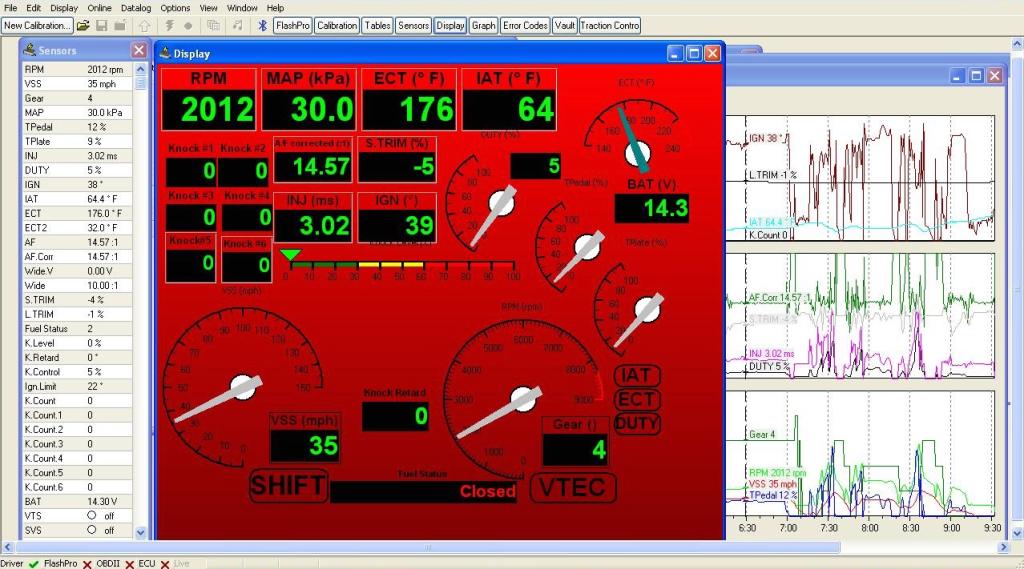
I wanted to see how the ECU handled gas containing ethanol vs gas without ethanol. The short and long term trims were adjusted by the ECU to compensate for the ethanol to hit the targeted AF.
Last edited by 6spd-GERCO; 01-29-2015 at 12:23 AM.
#138
How high and how cold? climbing equals higher load/demand and thus more potential for knock on an N/A TL. Watch what happens to load as you climb and keep the throttle blade the same. We aren't talking about putting 87 octane in your 335i either that's an entirely different beast.
If you can avoid high loads, I feel 87 would be fine, but I run 91.
If you can avoid high loads, I feel 87 would be fine, but I run 91.
#139
Hi everyone,
I decided to dive even deeper. I went to Amazon to purchase this:
Amazon.com: ScanTool 427201 OBDLink LX Bluetooth: OBD Adapter/Diagnostic Scanner for Android & Windows: Automotive
And I downloaded these Android apps:
https://play.google.com/store/apps/d...l.torque&hl=en
https://play.google.com/store/apps/d...cnF1ZXNjYW4iXQ
which should, hopefully, allow me to directly measure ignition timing retard due to knock. Once they come, I will take screenshots and report my findings running 87 under various conditions in winter. I will try to answer the following questions, if I can:
1) My initial guess was that in cold weather conditions, the lower octane fuel would not necessarily lead to ignition retarding. I should hopefully confirm or refute this.
2) If ignition retarding is occurring, I should hopefully determine if it is able to control the levels of knocking down to "acceptable" levels.
If anyone else has already gathered this data, please post a link to it. I'd be very interested to see.
Also, I found another website that better explains the knock control mechanisms:
FlashPro Help
As well as the textbook I pointed to earlier, in which chapter 4.2 covers knock control:
http://www.powerstyle.ru/docs/ebook.pdf
I decided to dive even deeper. I went to Amazon to purchase this:
Amazon.com: ScanTool 427201 OBDLink LX Bluetooth: OBD Adapter/Diagnostic Scanner for Android & Windows: Automotive
And I downloaded these Android apps:
https://play.google.com/store/apps/d...l.torque&hl=en
https://play.google.com/store/apps/d...cnF1ZXNjYW4iXQ
which should, hopefully, allow me to directly measure ignition timing retard due to knock. Once they come, I will take screenshots and report my findings running 87 under various conditions in winter. I will try to answer the following questions, if I can:
1) My initial guess was that in cold weather conditions, the lower octane fuel would not necessarily lead to ignition retarding. I should hopefully confirm or refute this.
2) If ignition retarding is occurring, I should hopefully determine if it is able to control the levels of knocking down to "acceptable" levels.
If anyone else has already gathered this data, please post a link to it. I'd be very interested to see.
Also, I found another website that better explains the knock control mechanisms:
FlashPro Help
As well as the textbook I pointed to earlier, in which chapter 4.2 covers knock control:
http://www.powerstyle.ru/docs/ebook.pdf
#140
#141
What is the huh in reference to? Ethanol has a lower energy content than gasoline and it will take more fuel to reach stoich. I'm sure his short term fuel trims were adjusting to compensate for the 10% ethanol in the gas now. You can usually see this in practical application by filling up with E10 and comparing overall mileage to non ethanol 93. Mileage will be less with the ethanol 'laced' gas.
It's similar to flex fuel vehicles. In the olden days of flex fuel, many cars had an ethanol sensor and would change the computer programming accordingly. Now, they merely use the oem wide band O2s and let it adjust its fueling on the fly. Well, at least Ford does it that way. Im not sure about GM. Anywho, pretty much any car in the past 20 years can accommodate E10 just by using its factory O2 sensor to adjust the fuel trim.
It's similar to flex fuel vehicles. In the olden days of flex fuel, many cars had an ethanol sensor and would change the computer programming accordingly. Now, they merely use the oem wide band O2s and let it adjust its fueling on the fly. Well, at least Ford does it that way. Im not sure about GM. Anywho, pretty much any car in the past 20 years can accommodate E10 just by using its factory O2 sensor to adjust the fuel trim.
#142
Last time I used this app it only allowed me to read knock under WOT so what I did is cruising at about 40 MPH I'd manually lock transmission in 5th gear and step on the gas. With 70 degrees outside I was not able to detect any timing adjustments running 87. Running from stand sill position and letting transmission to shift on its own I'd detect knock between 65-75 MPH at about 5000 RPM.
Read the description/help of the knock detector plugin. Quickly though, 3rd gear low rpm to high rpm (WOT) so you get the widest band and don't switch gears.
#143
#144
That's not how you detect knock using the plugin and I'm not surprised if you let your car shift that it thought knock was happening.
Read the description/help of the knock detector plugin. Quickly though, 3rd gear low rpm to high rpm (WOT) so you get the widest band and don't switch gears.
Read the description/help of the knock detector plugin. Quickly though, 3rd gear low rpm to high rpm (WOT) so you get the widest band and don't switch gears.
Surprisingly I didn't loose any MPG after 3 consecutive fill ups as many claimed I would.
But I did hear (with a naked ear) knock on a star up when engine was hot just for split second. This is one of the reason I will not used 87 for my commute because my trips are short with multiple start ups per day.
#145
I'm running an TL Type-S ECU with adaptor in my TL for FlashPro.
Exactly the reason I stepped beyond description, using it as described didn't show any detonation at all. I wanted to test it under multiple conditions.
Surprisingly I didn't loose any MPG after 3 consecutive fill ups as many claimed I would.
But I did hear (with a naked ear) knock on a star up when engine was hot just for split second. This is one of the reason I will not used 87 for my commute because my trips are short with multiple start ups per day.
Surprisingly I didn't loose any MPG after 3 consecutive fill ups as many claimed I would.
But I did hear (with a naked ear) knock on a star up when engine was hot just for split second. This is one of the reason I will not used 87 for my commute because my trips are short with multiple start ups per day.
This is what I get wants to be done:
To measure how the ECU reacts via knock, knock control, ignition timing, RPM and load via MAP at various driving conditions with 87 octane (containing up to 10% ethanol) vs 91 octane (no ethanol added) at cold ambient air temps below 40 degrees F near sea level. I am at ~ 600 to 700 FT elevation.
20~25 minutes normal driving, with city (start stop) and highway. A 3rd gear pull, full sweep, unless a significant about of knock is detected on 87 (10 to 15 knock counts). Tank will be a mix of a small amount 91 left over in the form of reserve and the rest 87.
Testing would be done on base map calibration provided by Hondata. Test car is a 2004 6MT TL with over 130K on the clock.
This sound agreeable?
#146
Exactly the reason I stepped beyond description, using it as described didn't show any detonation at all. I wanted to test it under multiple conditions.
Surprisingly I didn't loose any MPG after 3 consecutive fill ups as many claimed I would.
But I did hear (with a naked ear) knock on a star up when engine was hot just for split second. This is one of the reason I will not used 87 for my commute because my trips are short with multiple start ups per day.
Surprisingly I didn't loose any MPG after 3 consecutive fill ups as many claimed I would.
But I did hear (with a naked ear) knock on a star up when engine was hot just for split second. This is one of the reason I will not used 87 for my commute because my trips are short with multiple start ups per day.

#147
This is what I get wants to be done:
To measure how the ECU reacts via knock, knock control, ignition timing, RPM and load via MAP at various driving conditions with 87 octane (containing up to 10% ethanol) vs 91 octane (no ethanol added) at cold ambient air temps below 40 degrees F near sea level. I am at ~ 600 to 700 FT elevation.
20~25 minutes normal driving, with city (start stop) and highway. A 3rd gear pull, full sweep, unless a significant about of knock is detected on 87 (10 to 15 knock counts). Tank will be a mix of a small amount 91 left over in the form of reserve and the rest 87.
Testing would be done on base map calibration provided by Hondata. Test car is a 2004 6MT TL with over 130K on the clock.
This sound agreeable?
To measure how the ECU reacts via knock, knock control, ignition timing, RPM and load via MAP at various driving conditions with 87 octane (containing up to 10% ethanol) vs 91 octane (no ethanol added) at cold ambient air temps below 40 degrees F near sea level. I am at ~ 600 to 700 FT elevation.
20~25 minutes normal driving, with city (start stop) and highway. A 3rd gear pull, full sweep, unless a significant about of knock is detected on 87 (10 to 15 knock counts). Tank will be a mix of a small amount 91 left over in the form of reserve and the rest 87.
Testing would be done on base map calibration provided by Hondata. Test car is a 2004 6MT TL with over 130K on the clock.
This sound agreeable?
#148
I was referring to 85 because you don't need the octane with the reduced oxygen in the air here, theoretically. Typical grades in Colorado are 85-87-91, and the 91 is relatively new. Used to be 85-87-89. I only use 91 now.
The following users liked this post:
RustyLogic (01-30-2015)
#150
Still waiting for my bluetooth ECU scanner. Will post the data once I acquire it (probably sometime next week).
#153
This is from my older thread before being supercharged.
https://acurazine.com/forums/photogr...ean-tl-791453/
I went from NJ to NY state (Rochester) to see my brother. The trip is approximately 400ish miles. I filled up with Shell 93 V-power about a mile away from my house. Reset the trip and fuel and off I went.
Quater tank used, 34 MPG 135 miles traveled in 2 hours
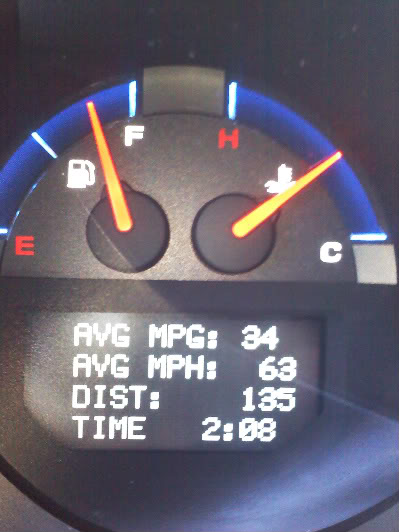
Half tank, 33 MPG 271 miles traveled in 4 hrs 22 mins
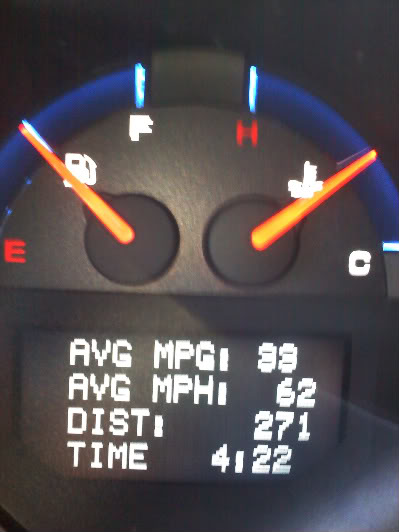
At 303 miles travled, still had about 12 miles left to hit her house, then I went to Rochester NY which was another 35 miles north.

For anyone not familiar with this trip. I live next to NYC right across the Hudson River. Getting to Rochester the driving takes you through much higher elevations. 2004 TL with a 6MT running on 93 Shell V-power and approximate speed 65 MPH.
https://acurazine.com/forums/photogr...ean-tl-791453/
I went from NJ to NY state (Rochester) to see my brother. The trip is approximately 400ish miles. I filled up with Shell 93 V-power about a mile away from my house. Reset the trip and fuel and off I went.
Quater tank used, 34 MPG 135 miles traveled in 2 hours

Half tank, 33 MPG 271 miles traveled in 4 hrs 22 mins

At 303 miles travled, still had about 12 miles left to hit her house, then I went to Rochester NY which was another 35 miles north.

For anyone not familiar with this trip. I live next to NYC right across the Hudson River. Getting to Rochester the driving takes you through much higher elevations. 2004 TL with a 6MT running on 93 Shell V-power and approximate speed 65 MPH.
#154
This is my build thread. Page 3 here: (https://acurazine.com/forums/photogr...-878670/page3/) has a quick drive about 15 miles on the highway doing 60 MPH and supercharged. I broke 38 MPG based on the screen. I HAVEN'T taken any long trips with my TL since being supercharged. In fact, I've only put on about 3K miles in the last two years.
Anyway here is my quick highway run (supercharged) for 15 mins max.
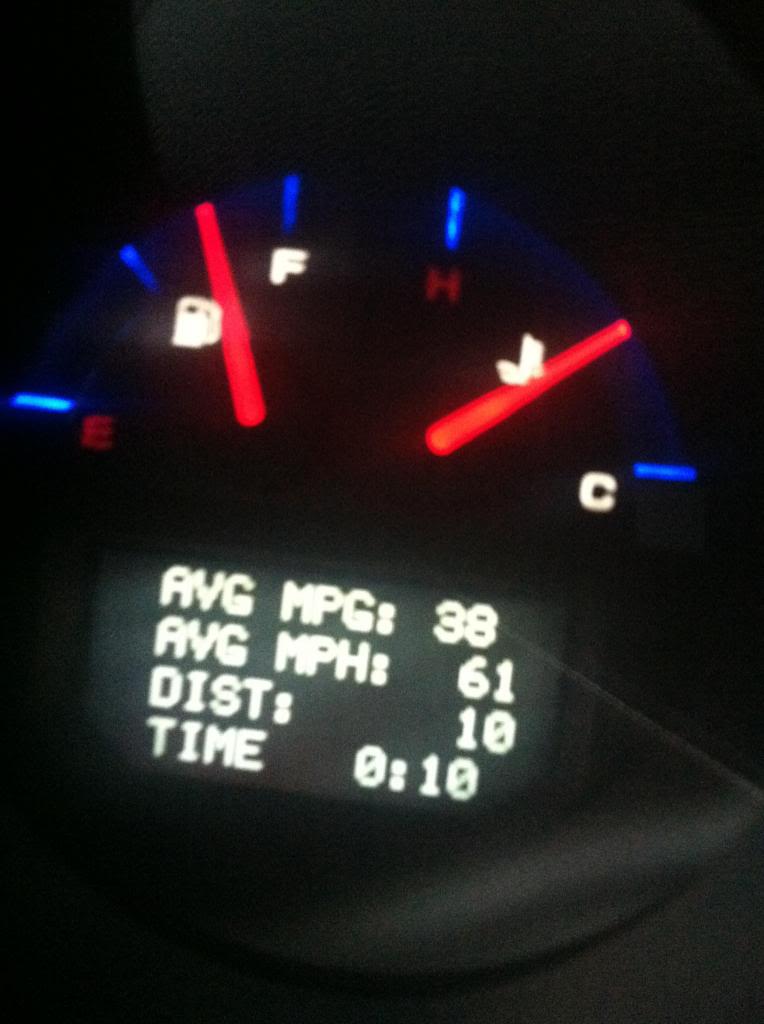
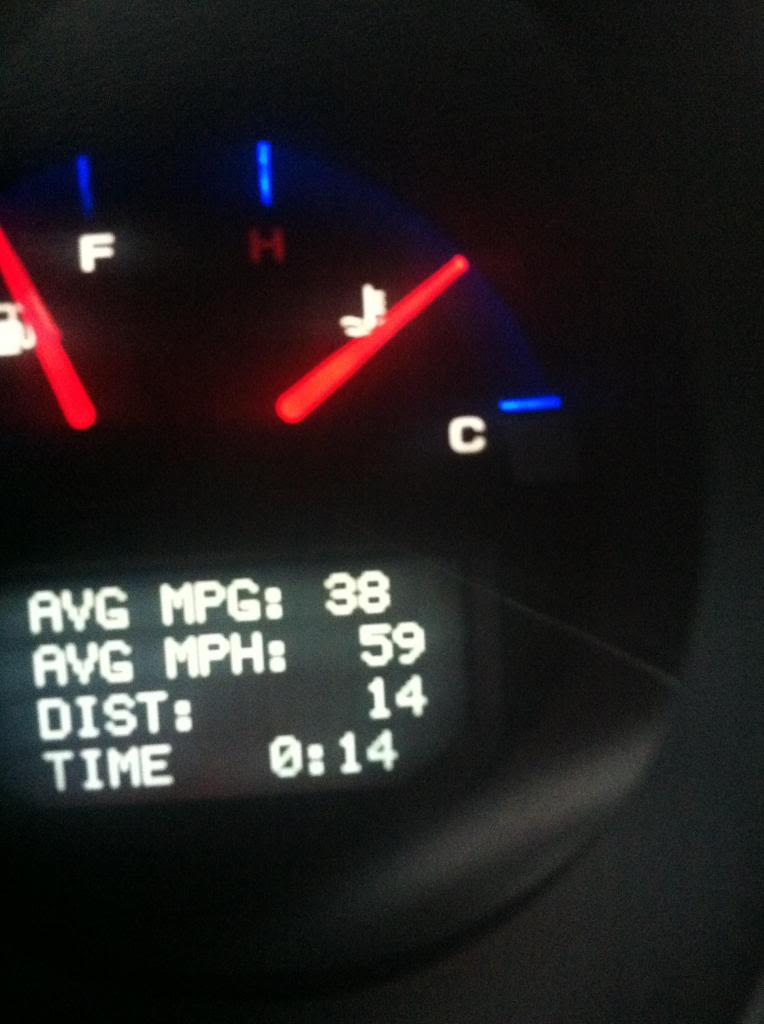
Anyway here is my quick highway run (supercharged) for 15 mins max.


#155
This is from my older thread before being supercharged.
https://acurazine.com/forums/photogr...ean-tl-791453/
I went from NJ to NY state (Rochester) to see my brother. The trip is approximately 400ish miles. I filled up with Shell 93 V-power about a mile away from my house. Reset the trip and fuel and off I went.
Quater tank used, 34 MPG 135 miles traveled in 2 hours
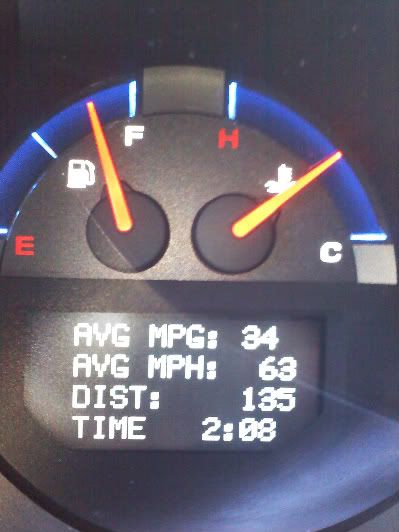
Half tank, 33 MPG 271 miles traveled in 4 hrs 22 mins

At 303 miles travled, still had about 12 miles left to hit her house, then I went to Rochester NY which was another 35 miles north.
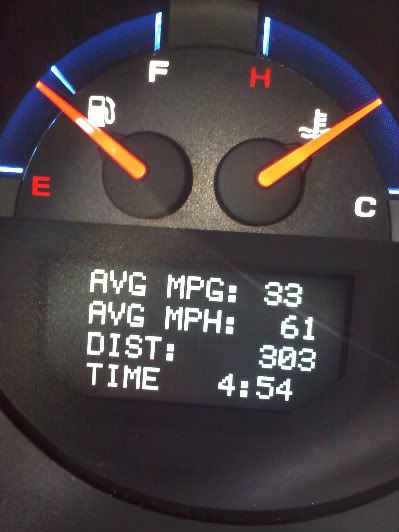
For anyone not familiar with this trip. I live next to NYC right across the Hudson River. Getting to Rochester the driving takes you through much higher elevations. 2004 TL with a 6MT running on 93 Shell V-power and approximate speed 65 MPH.
https://acurazine.com/forums/photogr...ean-tl-791453/
I went from NJ to NY state (Rochester) to see my brother. The trip is approximately 400ish miles. I filled up with Shell 93 V-power about a mile away from my house. Reset the trip and fuel and off I went.
Quater tank used, 34 MPG 135 miles traveled in 2 hours

Half tank, 33 MPG 271 miles traveled in 4 hrs 22 mins

At 303 miles travled, still had about 12 miles left to hit her house, then I went to Rochester NY which was another 35 miles north.

For anyone not familiar with this trip. I live next to NYC right across the Hudson River. Getting to Rochester the driving takes you through much higher elevations. 2004 TL with a 6MT running on 93 Shell V-power and approximate speed 65 MPH.
Nice, but it's a one-way trip on summer gas. I have done a few 32-33 MPG one-way trips on both 87 and 91 summer gas...
#158
And back to the main point of my post which you failed to comprehend: My highway MPG doesn't suffer due to use of 87.




